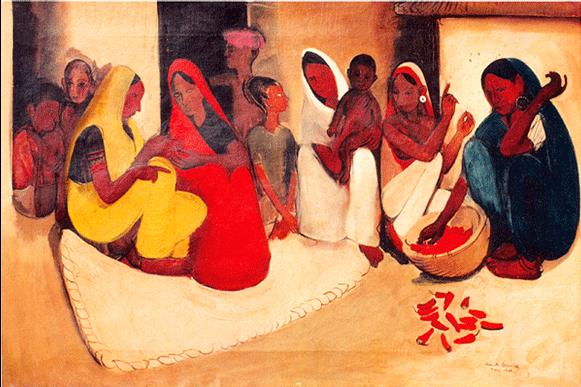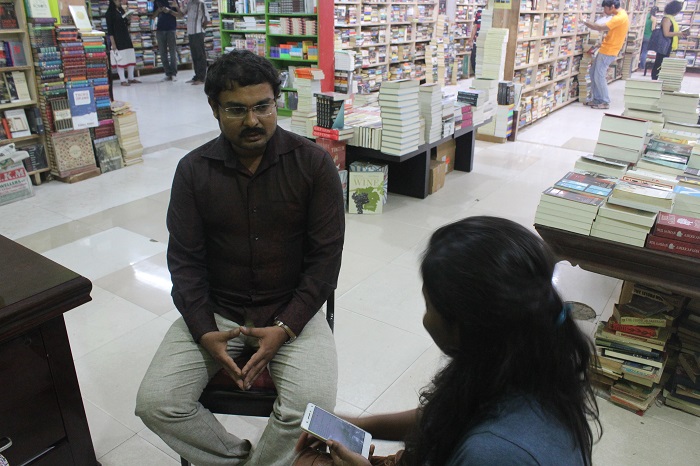Lunatic in My Head is one of a kind story written by Anjum Hasan. It is set in Shillong of the 1990s. The novel is an interwoven story of three main characters: an English college lecturer, Firdaus Ansari; an IAS aspirant Aman Moondy, and an eight year old, Sophie Das.
Firdaus is caught between her teaching and her wish to pursue an MPhil to safeguard her teaching post at the convent she teaches in. She is also caught between her colleagues’ personal affair dramas and her very unhelpful, lecherous potential supervisor, Thakur.
The novel begins with Firdaus on an April afternoon when “pine trees dripped slow tears,’ (a line that hooked me to the book immediately for its visuals) and as she walks down a street, the opening page itself gives a sweeping view of the multicultural composition of the city, from the Khasis, to Bengalis, to Goans, and to Firdaus herself, who is from Bihar but born and brought up in Shillong. Her sense of being rooted there in Shillong yet being seen as a dkhar, which is the Khasi word for non tribal or foreigner, is another of the conflicts she is entangled in.
Aman Moondy is studying for the Indian Administrative Service (IAS) exams for the second time, having failed on his first attempt. His first love, however, is Pink Floyd. He and his friends, Ibomcha and Ribor, even formed a band, ProtoDreamers and played Pink Floyd’s covers for several small occasions. Aman lives and breathes music. He compares everything around him to music, including his infatuation for Concordella. He is also on the other hand, someone who dislikes the smallness of Shillong and wants to leave. This is also why he decided to give the IAS exam a shot or two. For him, it meant a window to the outside world.
When we first read about Sophie, she is sitting in class and wondering how the baby in her mother’s belly will come out. Sophie herself is a product of an intercultural marriage, her father, Mr. Das, being a Bengali whereas her mother a northerner. Sophie loves to read and is fascinated by her neighbour, Elsa Lyngdoh, and her house, which was the only place she was allowed to go by herself. She has strange conversations with Elsa and even stranger ones (and perhaps a touch too creepy) with her son, Jason as well. Elsa, an old Khasi woman, and an eight year old, Sophie, made for an odd couple whenever they went together for an excursion outside the house.
Interspersed through these main characters are stories of other eclectic characters too such as Aman’s friend, Ribor, whose brother is a thug or Mr. Das’ struggles to get a job; or Nivedita, Firdaus’ colleague, who is dealing with her husband having an affair; or the strict Mother Gertrude, the principal of the convent and the eccentric beauty parlour owner, Sharon, who is ‘a quarter-British, a quarter-Assamese of the tea planter variety and half-Khasi.’
The set of characters the novel explores itself portrays the ethnic composition of the city and one of the themes the story portrays is the tribal versus non tribal issue that still rages on. The spotlight on it is subtle, something that lurks behind seemingly routine things of life such as when a migrant, Sarak Singh, an aloo muri vendor, was threatened by three boys in leather jacket or when Sophie felt utterly ashamed of herself amidst a Khasi gathering with Elsa or even Aman who always feels the duality of belonging and not belonging.
Anjum Hasan gives no straightforward answers because there are none. The novel ends from where it began – Firdaus teaching Hemingway. The closing is not grandiose but an affirmation of change (even if unremarkable) and making peace (however tenuous) with your own sense of identity.
Although first published in 2007, Lunatic in my Head is still relevant to today’s India, as it is riddled by extremism and hatred for the other, for the outsider and where your identity is increasingly being attached to fixed, political categories, leaving no space for any fluidity and understanding of those who do not fit in into neat compartments.
A final literary tidbit: The title of the novel comes from Pink Floyd’s song, Brain Damage, which makes one wonder whether similar lunatics, having an identity crisis, run through all our heads as well!









